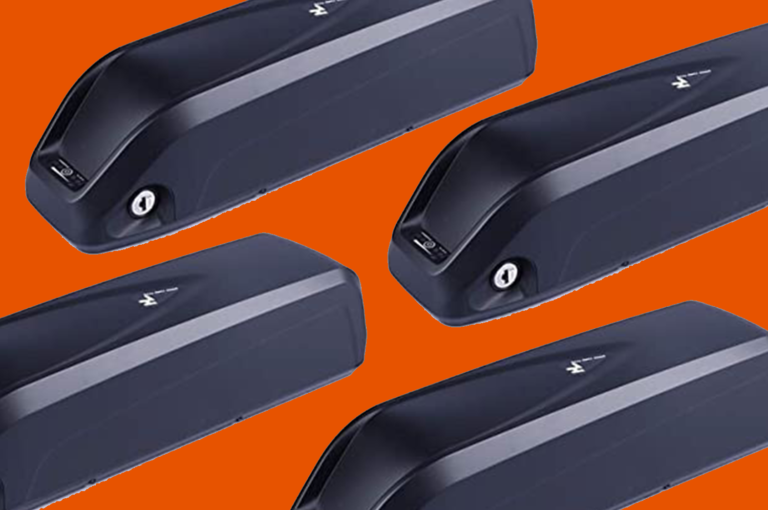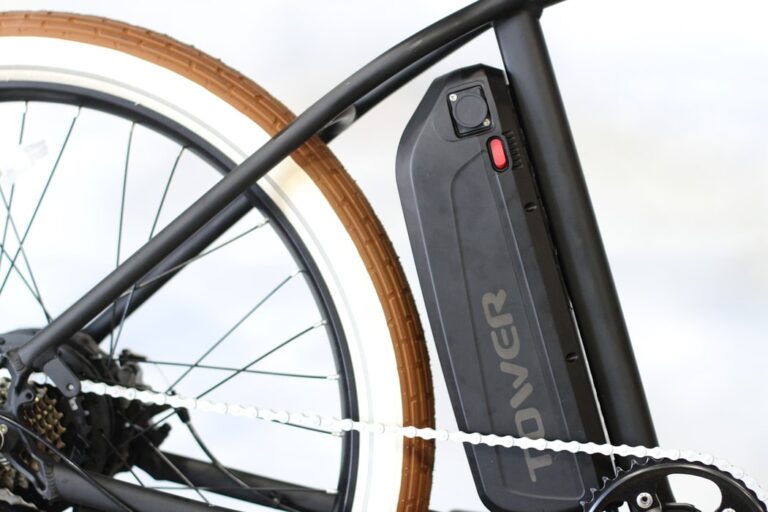Can You Ride E-Bikes In US National Parks? [Yes, But Read This First]
The question of riding e-bikes is a simple one that should have either a yes or no answer; however, it really isn’t that simple.
The answer comes down to how specific laws may be interpreted and which laws are applied where.
As of August 30, 2019, the Department of Interior Secretary ordered National Park Service (NPS) to establish interim policies that guide the use of e-bikes on public lands. e-Bikes may be used in the same manner as traditional bicycles. However, e-Bikes are not allowed in wilderness areas, and if the motor can propel the rider without pedaling.
The majority of states have adopted e-bike policies that follow legislation that allows 3 classes of e-bikes to have access to bicycle paths in US national parks.
As I’m sure you are aware, navigating the differences between federal and state laws is not an easy endeavor, and there are whole law offices dedicated to doing such.

e-Bike regulations image courtesy of peopleforbikes.org
Table of Contents
What Is The Confusion With The Use Of e-Bikes?
E-bikes are a relatively new phenomenon, and as such, the law is slowly catching up to deal with legislation. In principle, the act of riding a bike around the National Parks of the United States is perfectly fine.
You are merely operating a bicycle with an electric motor and not creating noise pollution or pollution caused by fossil fuel engines.
Open to interpretation is just what classifies as a motorized vehicle. Some bylaws include the wording that no motorized vehicle may be operated by the public and National Parks are often site-specific. This means that what is fine and dandy in one National Park is strictly forbidden in another.
What Are The 3 Classes Of e-Bikes, And How Are They Defined?
- Class 1: e-Bikes that provide pedal-assist only, with no throttle, and have a maximum assisted speed of 20 mph.
- Class 2: e-Bikes that have a maximum speed of 20 mph, but are also throttle-assisted.
- Class 3: e-Bikes that are pedal-assist only, with no throttle, and a maximum assisted speed of 28 mph.
All 3 classes above limit the motor’s power to 1 horsepower, which is 750W.
Interactive State-by-State e-Bike Laws Map
Alabama | Alaska | Arizona | Arkansas | California | Colorado | Connecticut | Delaware | Florida | Georgia | Hawaii | Idaho | Illinois | Indiana | Iowa | Kansas | Kentucky | Louisiana| Maine | Maryland | Massachusetts | Michigan | Minnesota | Mississippi | Missouri | Montana | Nebraska | Nevada | New Hampshire | New Jersey | New Mexico | New York | North Carolina | North Dakota | Ohio | Oklahoma | Oregon | Pennsylvania | Rhode Island | South Carolina | South Dakota | Tennessee | Texas | Utah | Vermont | Virginia | Washington | West Virginia | Wisconsin | Wyoming
How The National Park Service Has Reacted To e-Bikes
The National Parks realize that more and more people are using e-bikes, and many of these are finding their ways into the National Parks.
This is creating much confusion for the users, who have no intention of breaking local or Federal laws and have been inundating the NPS with questions, prompting a press release on April 8, 2020.
More than 380 of the 419 national park sites evaluated e-bike use in response to the National Park Service (NPS) policy explained below.
As e-bikes become more popular both on and off NPS-managed lands, the NPS recognized the need to address this emerging form of recreation and active transportation in its regulations.
A proposed e-bike regulation was opened for a 60-day public comment period. This public comment period lasted until Monday, June 8, 2020. The proposed rule, identified by the regulation identifier number (RIN) 1024-AE61, was opened to a public forum; however, while this date has passed people can still submit quires or specific questions about the use of e-bikes to:
• Jay Calhoun, Regulations Program Manager, National Park Service, 1849 C Street NW, MS-2472, Washington, DC 20240.
The regulation would define the term “electric bicycle” which is, as a new technology, missing from much of the rules and regulations, allowing superintendents to provide for e-bike use in a similar manner to the current e-bike policy.
The NPS clearly recognized the need to seek public input on this rule. The intent of this action sought to address a fast emerging technology which was being used by increasingly more and more people in a manner that accommodates visitors and increases opportunities for the public to enjoy recreation within and travel through the National Park System.
While at the same time protecting the resources and values that draw millions of visitors each year.
Last August 30, 2019, the National Park Services announced a new electric bicycle (e-bike) policy for national parks, expanding recreational opportunities, and accessibility.
This policy has been set forth “to create a clear and consistent e-bike policy on all federal lands managed by the Department.” This was to be expected as this supports Secretary’s Order 3366 aimed at increasing access and opportunities to the National Parks.
Shouldn’t e-Bikes Be Treated The Same As Regular Bicycles In Regulation?
The difference between traditional bicycles and e-bikes is starting to be understood greater and with this the potential impact on the landscape and visitors of the National Parks.
The potential of e-bikes is that they present a great opportunity for people who might not have previously been able to access and enjoy the spectacular National Parks around the country.
Previously, many of these parks, trails, and amazing views were reserved for the fittest that could hike or bike long distances and up steep hills.
The National Park Services are beginning to recognize that e-bikes offer the best of both worlds, offering inclusivity for those that might not be able due to illness or disability and also for their own park staff to traverse the many miles of trails that are offered by the National Parks.
All this while combating the consumption of fossil fuels and providing a greener alternative.
What Are The Issues Of Using e-Bikes In National Parks?
Currently, parks are opening up for visitors to use e-bikes for transportation and recreation in the same manner that traditional bicycles would be used in these places.
What is still prohibited is using the motor to propel an e-bike without pedaling, except in locations that are open to members of the public to use motorized vehicles.
State laws that govern the age, licensing, and safety legislation are still in effect in the applicable jurisdiction so, if your state requires specific bylaws, for example, a helmet, this must still be worn whilst enjoying the National Parks on your e-bike.
After reading and digesting all the information being released, and then trying to make sense of this without hiring a lawyer, the National Parks acknowledges that e-bikes fall into a void of understanding.
They are in between regular bicycles, which are allowed in many places within the National Parks, and motorized vehicles, which are prohibited in many places.
It does seem that the most pressing concerns are how to integrate new laws into existing laws regarding the use of bicycles and how these apply to e-bikes, especially when it comes to their classification as vehicles.
Under the class system described above, this restriction applies to class 2 e-bikes only.
Do Park Supervisors Have A Say In Regards To e-Bikes?
The rights of Park Superintendents are not infringed upon, this includes the right to restrict at any time the use of e-bikes and may include imposing conditions upon the use of e-bikes, such as closing locations to the use of e-bikes that might be open to regular pedal bicycles, considerations around natural and cultural resource protection.
This is also in conjunction with other management activities and objectives after taking into consideration that not one size will fit all in relation to public health and safety.
If warranted by these criteria, superintendents may manage e-bikes, or particular classes of e-bikes, differently than traditional bicycles in specific locations.
For example, a superintendent could determine that a trail open to traditional bicycles should not be open to e-bikes, or should be open to class-1 e-bikes only.
So, Can I Take My e-Bike To The National Park?
While we started out saying that the question doesn’t always have a straight answer of yes or no, there is a more definitive answer now.
The use of e-bikes is covered under the August 2019 e-bike policy, so depending on where you live, your national park law can differ.
There isn’t a set answer that applies to all National Parks, even all parts of National Parks.
Contact the National Park that you plan on visiting ahead of time to avoid disappointment, or worse, serious trouble with either local or Federal authorities.
Final Thoughts
For those that frequent the National Parks (if you don’t, you really should as they are indescribably beautiful), it is apparent that some trails and paths are just not suitable for cyclists, let alone e-bikes that have the ability to travel much faster in certain circumstances.
The health and safety of visitors, as well as the effect on the preserved environments, will be taken into consideration before any official ruling is made about where e-bikes can go and how they must be used in the National Parks. For those that would rely on the benefit of power-assisted cycling, this ruling cannot come soon enough.




Leave a comment